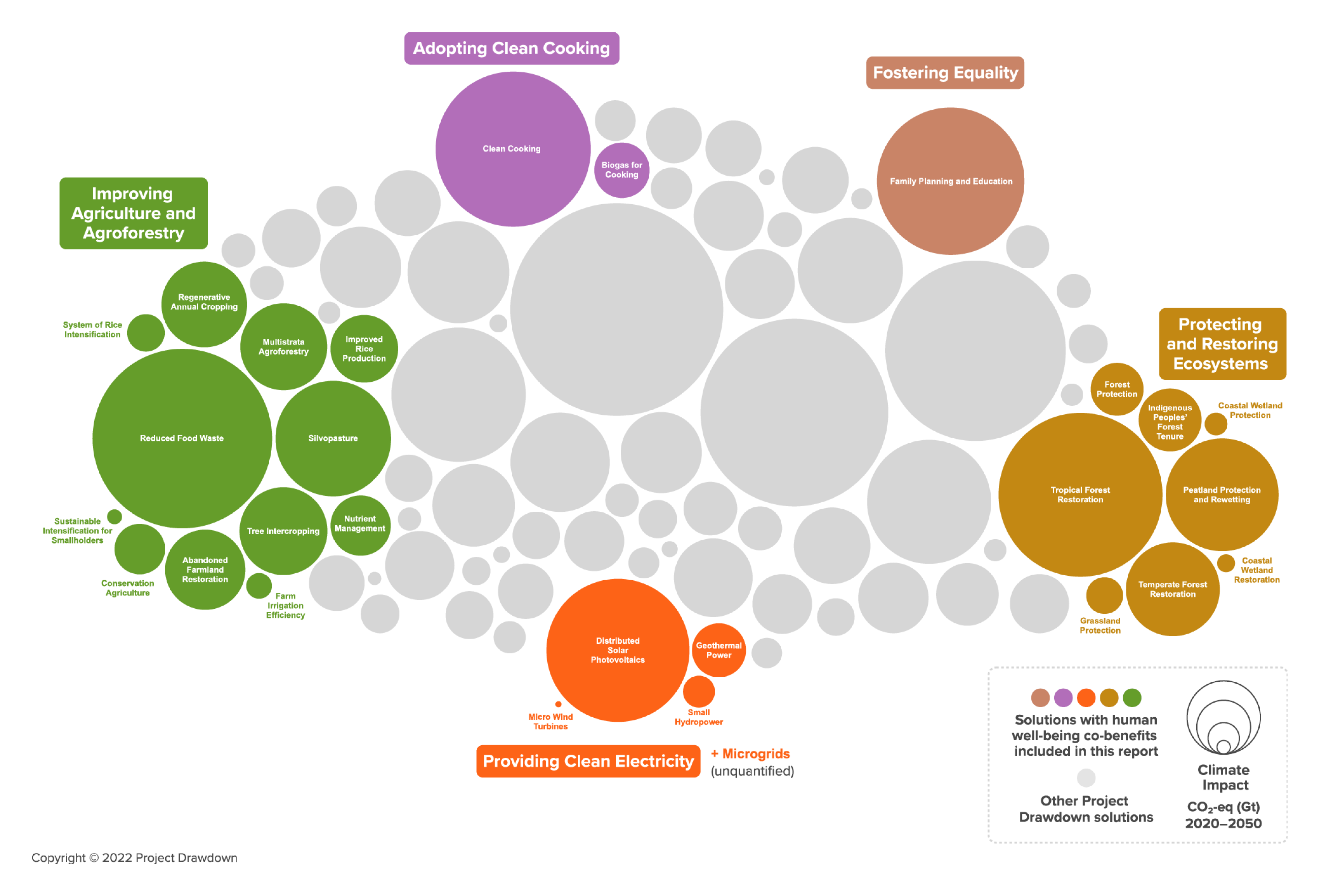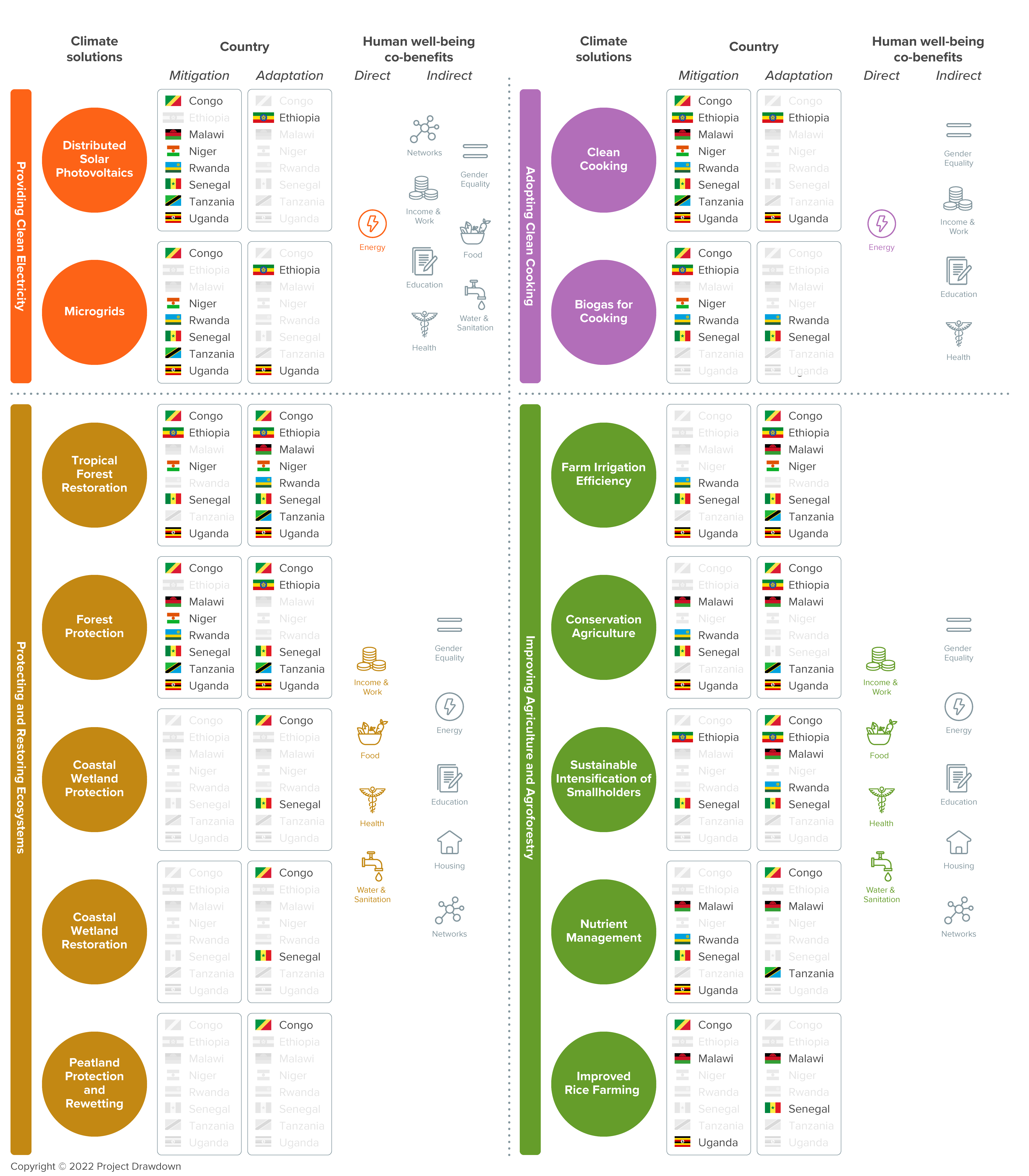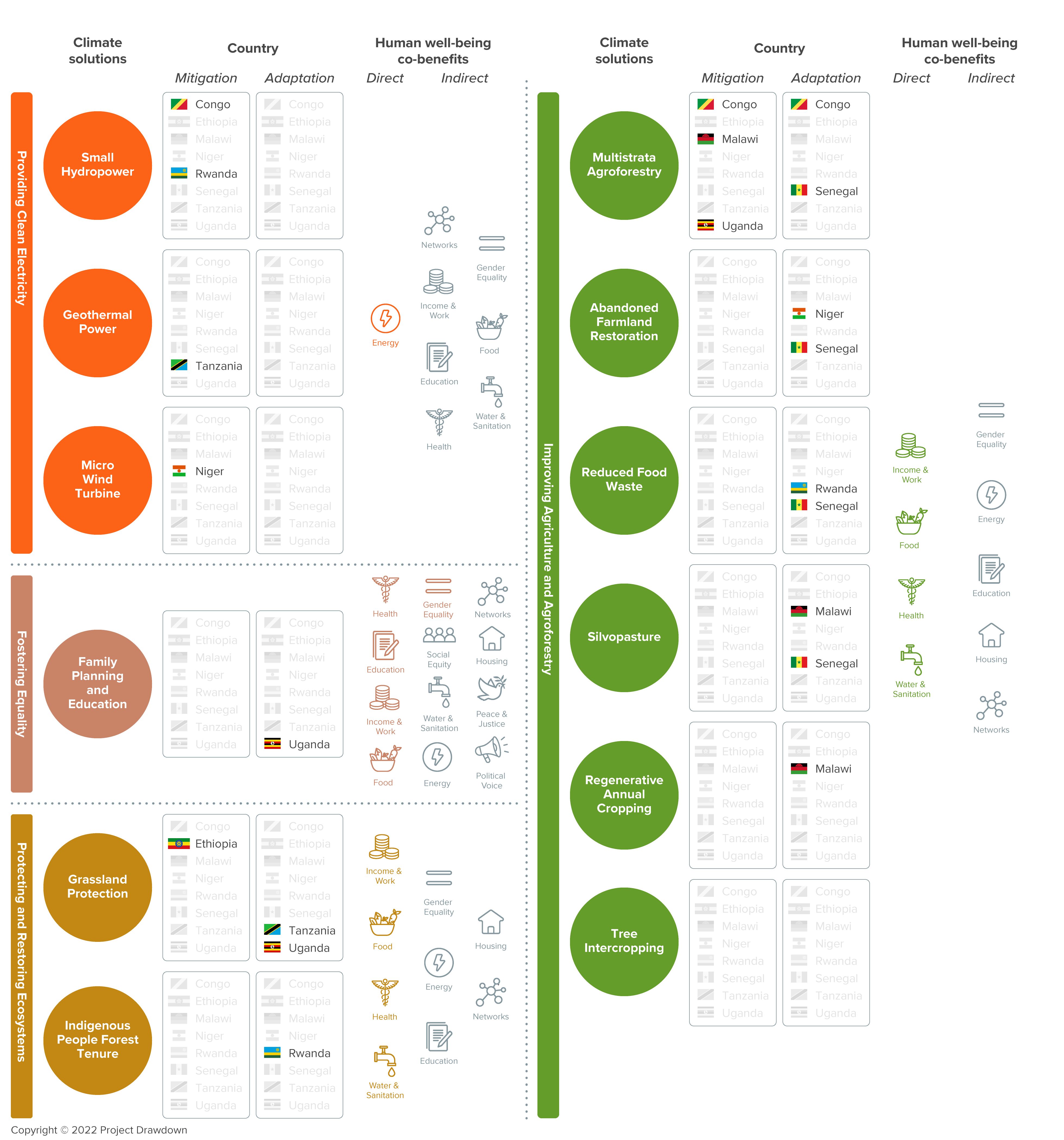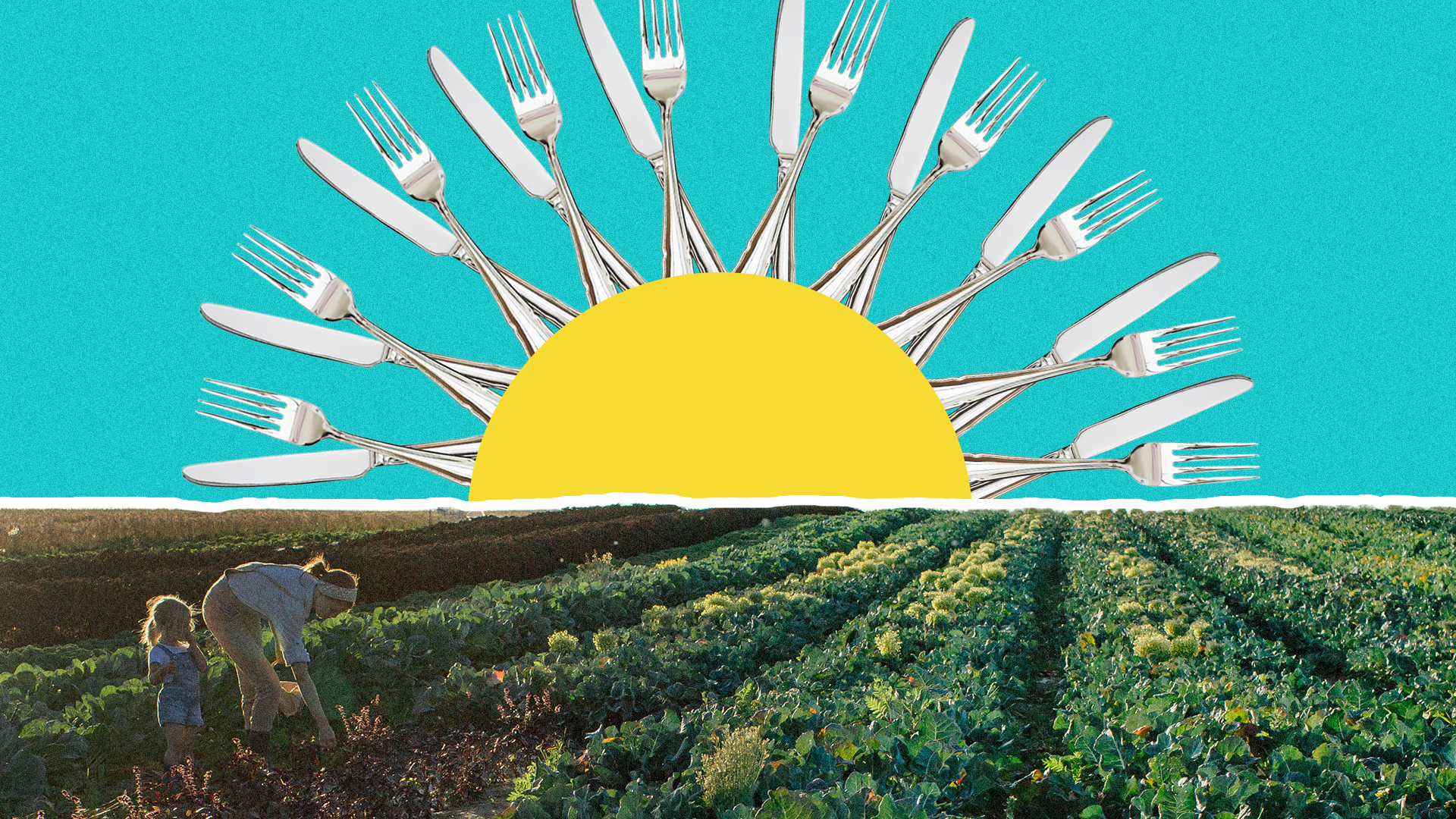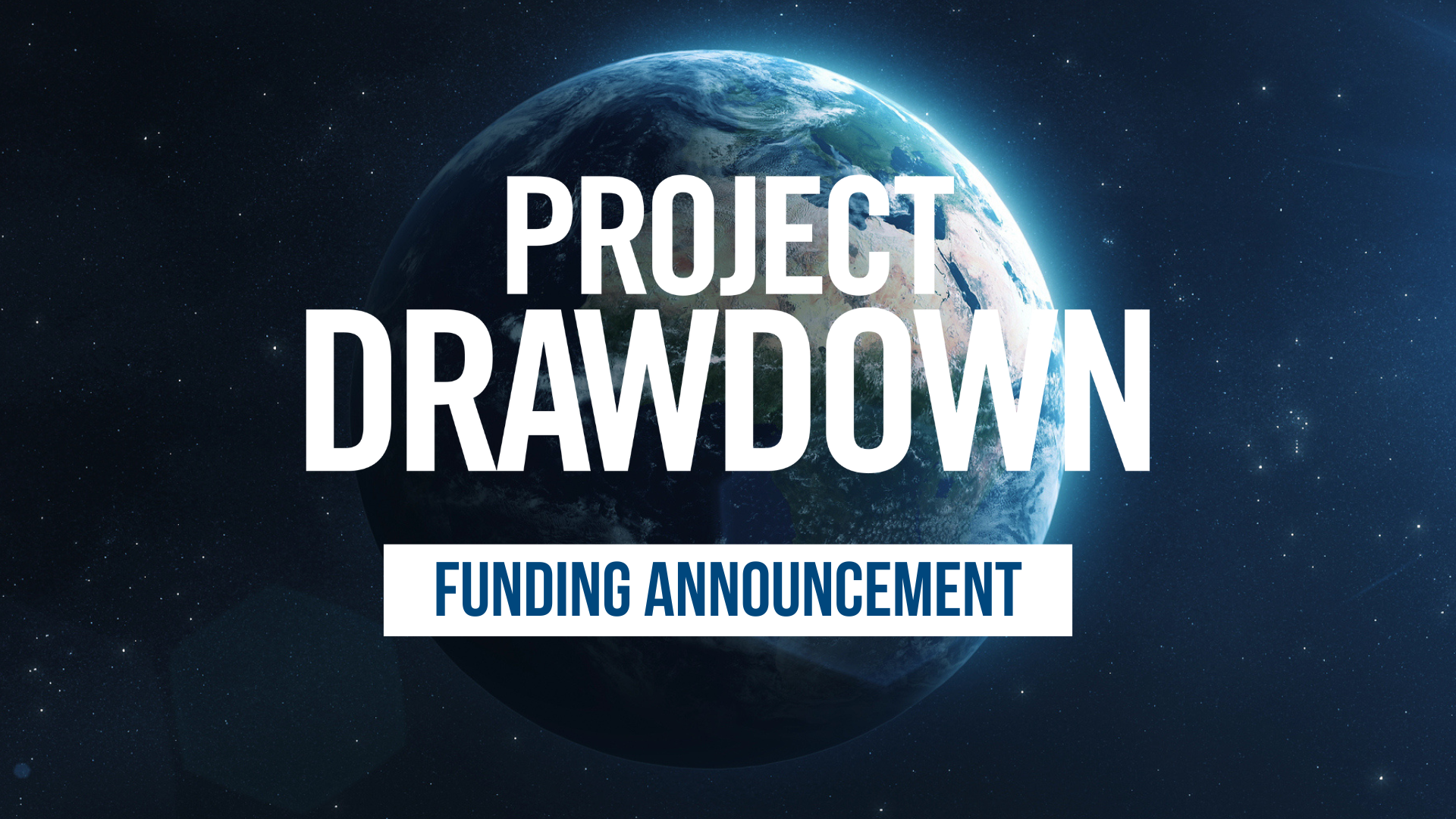Country-led prioritization of these climate solutions could be transformational in achieving national-level Paris Agreement commitments as well as the 2030 Sustainable Development Goals (SDGs)—especially for goals related to income and work, food, health, education, gender equality, and energy.
Supercharging national climate plans
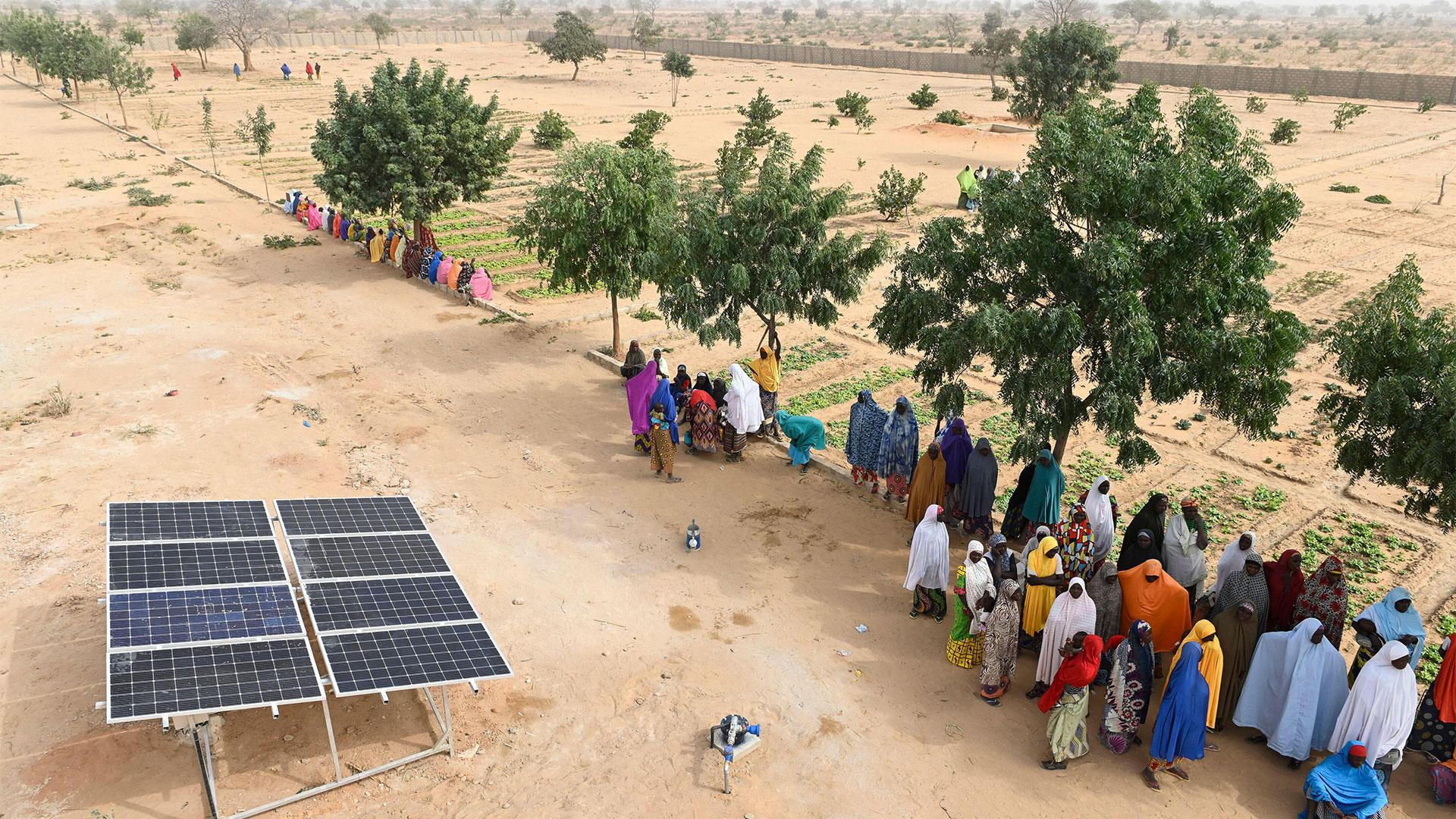
Climate solutions and efforts to improve the well-being of people experiencing extreme poverty can—and must—be complementary. How can African countries use their Nationally Determined Contributions (NDCs) to chart a path forward that not only achieves low-carbon development and builds climate change resilience but also helps lift people out of extreme poverty?
Project Drawdown’s landmark 2022 Climate-Poverty Connections report provides compelling evidence that 28 climate solutions (Figure 1) can simultaneously generate substantial human well-being benefits (Figure 2) for rural communities in sub-Saharan Africa and South Asia; 26 of these 28 solutions are applicable for the countries in this analysis.
Figure 1 — Shown in the colored circles are 28 climate mitigation solutions with enormous human well-being co-benefits for rural communities in low-and middle-income countries (the gray circles are Project Drawdown solutions that do not generate significant human well-being benefits for under-resourced rural communities).
Figure 2 — The 12 socioeconomic dimensions of the Donut Economics framework served as a model for the human well-being dimensions used in Drawdown Lift’s Climate-Poverty Connections report, which align with the 2030 Sustainable Development Goals.
Our approach
Drawdown Lift did a high-level analysis of the recently updated NDCs of eight African countries (Congo, Ethiopia, Malawi, Niger, Rwanda, Senegal, Tanzania, and Uganda) that are highly vulnerable to climate change (Figure 3) to understand the extent to which their national climate plans 1) recognize broader socio-economic development goals and 2) include climate solutions that contribute to mitigation, adaptation, and human well-being.
First, we explored whether the NDCs acknowledge that climate actions can contribute to poverty alleviation and improve the well-being of rural communities. To identify the extent of countries’ inclusion of development objectives in their NDCs, we looked for keywords focusing on poverty, vulnerability, rural livelihoods, rural communities, and well-being.
Next, we examined whether climate solutions with clear human well-being benefits were included in the NDCs (refer to Figure 1). In order to compare similar solutions mentioned in the NDCs, we reassigned a consistent name to such solutions. For example, strategies such as ‘improving charcoal production,’ ‘improving cooking efficiency,’ and ‘improved cookstoves’ were all considered as Clean Cooking—the relevant Project Drawdown solution. Meanwhile, within a given NDC, we combined similar solutions. For example, both ‘forest protection and health enhancement’ and ‘reforestation and restoration’ in Ethiopia’s NDC were considered Forest Protection.
We then identified opportunities to add or refine climate actions—drawing from solutions that were included in the Climate-Poverty Connections report but that were largely omitted from the NDCs—in future NDC iterations that would both contribute to climate goals (for mitigation and adaptation) and meet development objectives.
Figure 3 — The eight countries included in Project Drawdown’s pilot analysis have recently updated their NDCs and also experience high climate vulnerability, while representing different socioeconomic, geographic, and ecological regions in Africa. Data sources include the World Bank (population, rural population, extreme poverty, and rural access to electricity) and ND-GAIN (climate vulnerability).
Hover or tap countries for socio-economic metrics

Ethiopia
Extreme Poverty

Senegal
Extreme Poverty

Rwanda
Extreme Poverty

Tanzania
Extreme Poverty

Malawi
Extreme Poverty

Uganda
Extreme Poverty

Congo
Extreme Poverty

Niger
Extreme Poverty
Shading represents climate vulnerability:
Opportunity #1: Enhance the recognition of human well-being dimensions in NDC climate strategies
The good news? Climate strategies outlined in the eight NDCs broadly align with boosting high-level human well-being. All countries’ NDCs acknowledge poverty as a major issue, and most of the NDCs explicitly emphasize the need for climate strategies to contribute to improving human well-being (Figure 4). For example, Congo’s NDC states that “measures taken to address climate change should be closely coordinated with social and economic development in order to avoid adverse impacts,” while Rwanda’s NDC states that “climate solutions should also address key issues such as poverty.”
Further, all countries’ NDCs acknowledge the importance of gender mainstreaming, following the general trend of improvement from original NDCs, which largely omitted gender considerations. Of particular note, Uganda’s NDC also highlights the importance of climate education as a tool for improving climate resilience—a consideration that is unfortunately still lacking in most NDCs globally.
Figure 4 — Alignment between climate and human well-being strategies for the eight countries included in Drawdown Lift’s analysis.
Mention people living in poverty?
Mention the enhanced vulnerability of people living in extreme poverty?
Emphasize that climate solutions should also address poverty and improve human well-being?
List human well-being co-benefits of climate mitigation solutions?
Although gender inclusion, rural populations’ well-being, and poverty alleviation were common features of the NDCs, only three countries (Congo, Malawi, and Rwanda; see Figure 4) explicitly called out how the climate solutions included in the NDCs can benefit one or more of the 12 dimensions of human well-being (Figure 2). For example, Congo’s NDC noted that Forest Protection and Tropical Forest Restoration climate solutions also benefit several SDGs, such as SDG 1 (poverty), SDG 2 (food), SDG 5 (gender), and SDG 8 (work). However, in some cases the NDCs that listed specific well-being co-benefits of climate strategies could have been more comprehensive in enumerating the co-benefits. For example, while Rwanda included food, income and work, and energy well-being co-benefits for its ‘solar pumps’ climate strategy (referred to as Farm Irrigation Efficiency in Project Drawdown’s report), the country could have also recognized that solar pumps can improve access to clean water.
Be a Project Drawdown insider!
Opportunity #2: Emphasize climate solutions that boost human well-being
Clean Cooking, Biogas for Cooking, Distributed Solar Photovoltaics, Sustainable Intensification for Smallholders, Microgrids, Forest Protection, and Tropical Forest Restoration were the most frequently cited climate strategies that also contribute to the human well-being of rural populations in the eight NDCs (Figure 5). Other frequently included climate strategies with clear human well-being benefits were Farm Irrigation Efficiency, Conservation Agriculture, Nutrient Management, and Improved Rice Production.
In addition, Congo and Senegal—two out of the three coastal countries in the analysis—included powerful solutions like Coastal Wetland Protection and mangrove-focused Coastal Wetland Restoration in their NDCs. Meanwhile, Peatland Protection and Rewetting is applicable only to Congo, which included that solution as part of Forest Protection.
Generally speaking, we found that the inclusion of 14 of the climate solutions identified in the Climate-Poverty Connections report in the majority of the NDCs analyzed indicates significant potential for the national climate plans—if funded and implemented—to contribute to advancing human well-being.
Figure 5 — The eight NDCs examined in this analysis frequently included 14 climate solutions with substantial human well-being co-benefits (or that were specifically relevant for a given country). The countries that included such solutions are highlighted in black, and the solutions mentioned here were included either as part of mitigation strategies, adaptation strategies, or—for some countries—as both mitigation and adaptation strategies.
However, several of the impactful climate solutions identified in the Climate-Poverty Connections report that feature well-documented co-benefits for income and work, food security, water and sanitation, and health that are relevant to these eight countries—such as Small Hydropower, Micro Wind Turbines, Geothermal Power, Indigenous Peoples’ Forest Tenure, Grassland Protection, Reduced Food Waste, Abandoned Farmland Restoration, Multistrata Agroforestry, Silvopasture, Regenerative Annual Cropping, Tree Intercropping, and Family Planning and Education—were featured sparingly in the NDCs (see Figure 6; two of the 28 solutions, Temperate Forest Restoration and System of Rice Intensification, are not applicable in the eight countries). Featuring more of these double-duty climate solutions in the NDCs would result in stronger synergies for simultaneously meeting both climate and development goals in the eight countries.
In terms of greenhouse gas (GHG) emissions reduction and potential well-being benefits, the biggest available opportunity is for the countries to add Reduced Food Waste (which includes post-harvest food loss) (Figure 6) to their NDCs. Food waste accounts for 8-10 percent of global annual GHG emissions. In Africa, unintentional post-harvest food loss due to inadequate storage and poor food distribution networks stands at 14 percent. Including Reduced Food Waste as a climate strategy will not only help reduce emissions but will also contribute to strengthening food security (and improving health) in the eight countries.
Family Planning and Education generates substantial human well-being benefits for health, education, income and work, food, and gender equality for individuals and families. In addition, one long-term outcome of rights-based voluntary family planning and education—slower population growth—translates to lower emissions over time at a global level (Figure 6).
Figure 6 — The eight NDCs examined in Project Drawdown’s analysis frequently omitted 12 climate solutions with notable human well-being co-benefits. The countries that included these solutions are highlighted in black. These solutions were included either as part of mitigation strategies, adaptation strategies, or—for some countries—as both mitigation and adaptation strategies.
Opportunity #3: Recognize the mitigation potential of agriculture and agroforestry climate solutions
Agriculture, Forestry, and Other Land Use (AFOLU) climate actions were primarily included as adaptation strategies in the eight NDCs (Figure 5). Yet several of these currently available solutions such as Nutrient Management, Farm Irrigation Efficiency, Silvopasture, and Coastal Wetland Protection are also powerful mitigation solutions. As such, including them as mitigation-adaptation dual solutions can be advantageous to meet Paris Agreement goals. Climate solutions focused on either improving agriculture and agroforestry or protecting and restoring ecosystems contribute directly to boosting food, income and work, and water and sanitation, while also contributing indirectly to improving human well-being dimensions around health, gender equality, education, energy, networks, and housing.
Although Africa contributes a scant three percent to global emissions, AFOLU is a large contributor to GHG emissions from the continent. Acknowledging the mitigation potential of AFOLU solutions could make achieving the Paris Agreement goals more manageable and cost-effective in comparison to expensive and futuristic solutions.
Opportunity #4: Prioritize renewables for climate, energy, and human well-being goals
All of the eight NDCs include renewable energy solutions such as Distributed Solar Photovoltaics and Microgrids (Figure 5), highlighting deliberate efforts to use climate actions to address the widespread energy poverty in these countries. However, additional climate solutions such as Geothermal Power, Small Hydropower, and Micro Wind Turbines (Figure 6) were largely omitted from the NDCs. While Ethiopia, Malawi, Rwanda, Tanzania, and Uganda all have high geothermal potential, only Tanzania included Geothermal Power as a potential climate solution in its NDC.
Decentralized renewable energy solutions have reached parity with—or are even cheaper than—large-grid electricity. Addressing multidimensional energy poverty by serving rural communities through a wide variety of renewably-powered decentralized micro-grids or off-grid electricity would be impactful from both a climate and human well-being perspective.
The path forward: Opportunities to increase synergies between climate actions and development goals in NDCs
Our pilot analysis reveals several opportunities in the NDCs examined here to enhance synergies between climate and development goals. As countries revise their NDCs in the years ahead (and tap into available resources from the NDC Partnership and others to advance their NDCs), they can further highlight well-being benefits as part of their climate actions; intentionally incorporate the powerful suite of double-duty solutions identified in the Climate-Poverty Connections report; recognize AFOLU solutions as dual mitigation and adaptation solutions; prioritize essential human rights; and diversify renewable energy solutions in rural areas. These actions could better support rural communities in African countries that are most vulnerable to climate change and advance much-needed socioeconomic development and climate adaptation priorities while also charting low-carbon pathways to development.
For more information on our work, we invite you to visit Drawdown Lift for our latest news, research reports, media engagements, and more.
Press Contacts
If you are a journalist and would like to republish Project Drawdown content, please contact press@drawdown.org.

